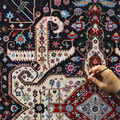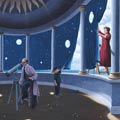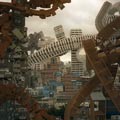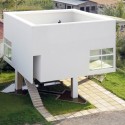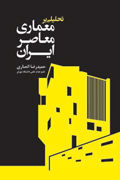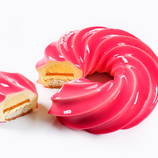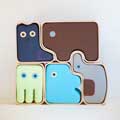 brooklyn NEW YORK
brooklyn NEW YORKsuckerPUNCH: describe your project.
evan TRIBUS+ezra ARDOLINO: Historically, the most critical element in the delivery system of ornamental effects was applied molding. From the Greeks and Romans to the Renaissance, Gothic and Baroque through the Victorian period, exterior and interior moldings served to provoke visual interest through the play of light and shadow across its articulated surfaces. Moreover, molding was underwritten by the relationship between the precision of its inherent geometry (a cross-section extruded along an axis) and its effectual geometries (the surfaces that receive light and project shadow).




This came to an ignominious halt with the advent of Modernism. Ornamentation in general and moldings in particular were put in the critical crosshairs for removal. They were deemed fussy and extraneous, symbols of the decadence of the previous era. The post-war housing boom coupled with manufacturing's ability to make, distribute and sell cheapened versions of moldings did worse. It rendered them vanilla and banal. Finally, post-modernism performed the coup-de-grace, co-opting moldings as part of an awkward representational system befitted to its ideology. Today, molding no longer performs the ornamental role that it had been finely calibrated to achieve.
This seminar seeks to reinvigorate the instrumental and conceptual use of moldings as part of the material protocols of ornamentation and to reestablish it as a site for architectural innovation. With the current technological advancements in computational design software and computer numerically controlled (CNC) production methods, the material and ornamental possibilities for moldings are robust. In particular, there is great potential in delivering ornamental effects through its textured and articulated surfaces. Towards this end, the seminar downplayed three-dimensional modeling in favor of producing surface articulation through a precise, rigorous and intentional use of the CAM software package. The students are required to understand and calibrate the relationship between the underlying geometry of found wood molding, the various algorithmic controls of the CAM software and the protocols of the machining operations in the production of a highly intentional set of surface effects. Intense iteration and both 2d and 3d analysis were employed as a means to understand, control and generate these effects. In total, we are asking not what moldings are, but what they can do.
Students:
Oliver Allaux
Jacqueline Cha
Christopher Evans
Nicholas Feihel
Guy James
Roberto Jenkins
Jung Hoon Jin
Arianna Lebed
Johnathan Min
Samantha Mink
Johana Monroy
Christopher Sondi
Francine Ngo
James O'Reilly
Sofia Xanthakou
Evan Yan




